CulBeat Express
2019.04.16 17:15
원선영 교수 개인전@리버사이드갤러리(NJ, 4/24-5/6)
조회 수 1010 댓글 0
원선영 교수 개인전: Then & Now (1982-2019)
SunYoung Won Lee Solo Show: Then & Now (1982-2019)
4월 24일-5월 6일
리버사이드 갤러리, NJ
오프닝 리셉션: 4월 27일(토) 오후 2-4시
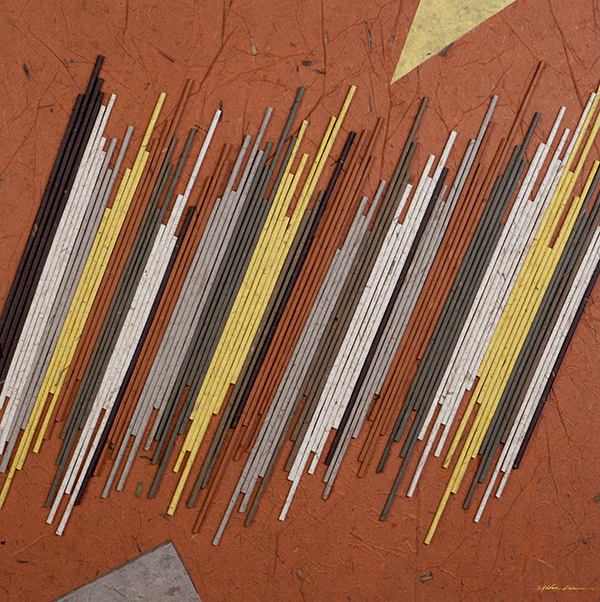
SunYoung Lee, Last Leaves, Mixed media on handmade paper, 48x 48 inches
오하이오주립대 교수를 지낸 원선영(SunYoung Won Lee) 박사의 개인전 'Then & Now'가 4월 24일부터 5월 6일까지 뉴저지 해켄색의 리버사이드갤러리에서 열린다. 오프닝 리셉션은 4월 27일 오후 2-3시.
이번 전시는 한지를 소재로 작업해온 원선영 작가의 1982년 초기 작업부터 2019년 신작까지를 망라하며 미국 내 한인 작가로서의 진화 과정을 일목요연하게 감상할 수 있다.
원선영 작가는 독특한 재료의 고유한 질감, 그 가능성과 자신의 개성을 하나로 융합시키려는 노력으로 동양적인 소박함과 시간을 초월한 단순함을 추구해왔다. 신비한 색상의 조화와 층층이 이어지는 추상적인 그의 작업은 여러가지 복합적인 특성을 융합시키려는 의도이다. 또한, 작가로서 항상 자연을 소재로 담아 자연과 인간이 떨어져서는 존재할수 없음을 표현하고자 한다.
원선영 작가는 "자연히 '삶이 무엇인가?'를 생각하게 됩니다. 나의 지나온 삶은?, 앞으로의 삶은? 등에 대한 고민을 우리 조상들이 오래전부터 손으로 만들어 사용한 독특하고 오랜 세월을 잘 견디는 재료 한지의 매력에 차츰차츰 끌려들었습니다. 자연 속의 뽕나무 속껍질로부터 ‘한지’로의 새로운 삶으로 태어나는 것은 바로 죽음에서 다시 살아난 것과 같다고 하겠지요. 한지가 우리 삶을 뜻하듯 '어디서 와서, 어디로 가고, 또, 타고 남은 재는 밑거름이 되어 어린 나무로 새 생명을 탄생시키는 많은 의미를 품고 있는 것 같지요. 그러면, ‘한지’는 우리가 원하는 ‘영원한 삶’을 표현하고 싶은 것일까요?"하고 질문한다.
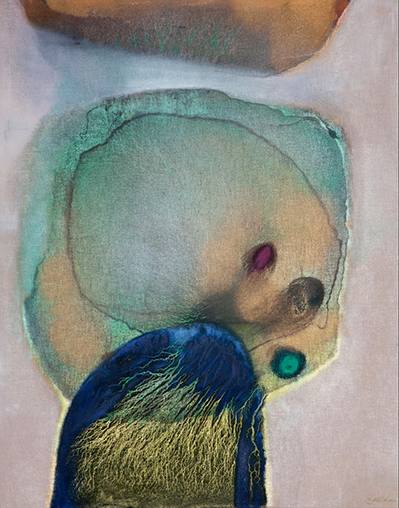
SunYoung Won Lee, Rippling Water/파문, 1990, Oil on canvas, 40 x 50 inches
이어 그는 "그래서, 저의 작업은 요즈음 자연, 그 자체를 담고있는 한지의 가능성에 푹빠져 제가 추구하는 영원한 삶과 내면의 감정을 표현해보려고 하였습니다. 자연에서 추출한 물감을 들이고, 촘촘한 줄로 접거나, 돌돌 말거나, 겹겹으로 쌓는 등 한지로 제작한 그의 작품들은 삶의 이야기 같습니다. 그 이야기는 즐거운 것도, 슬픈 것도, 때로는 허무한 것도 있겠지요. 결론적으로 한지는 제 자신, 저의 삶, 그리고 저의 작품의 의미를 나타내는 것일까요?"하며 자문하고 있다.
원선영 작가는 이화여고 졸업 후 이화여대와 대학원에서 서양화를 전공했다. 뉴욕 프랫인스티튜트(Pratt Institute)에서 회화와 그래픽아트로 석사학위를 받았다. 1988년 오하이오 주립대(Ohio State University)에서 미술교육으로 박사학위를 받았으며, 이후 동 대학에서 교수로 재직하다가 1999년 은퇴했다. 1969년 프랫인스티튜트, 1990년 오하이오주립대에서 개인전을 열었으며, 다수의 그룹전에 참가했다.
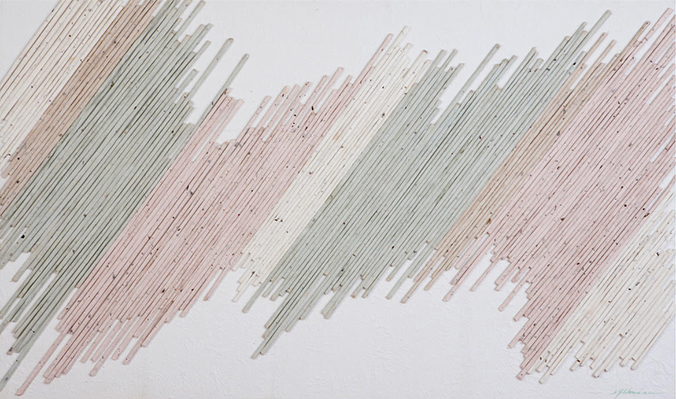
SunYoung Won Lee, Dream of Blossom/개화의 꿈, 2018, Mixed media on hanji paper, 36 x 60 inches
Artist statement
My artwork employs the timeless process of unifying unique material properties and my self. Nearly all my works convey a transcendent simplicity mediated by a Korean-American sensibility. The color nuances and its numerous layers intertwine the concepts of multiplicity and unity, suggesting a universal inseparability between human existence and nature.
In this later stages of my life, it is natural to ponder about this entity called life: what my life has been and what it will become. I have felt a strong connection with the unique handmade paper material called hanji. From the inner bark of the mulberry tree, hanji is born again after death, as a resilient pulp to create this traditional Korean paper which has been used by Korean craftsmen for centuries. The symbolism of hanji is compatible to how my life has been, is, and will become. Hanji comes from the inner bark of the mulberry tree. Its creation into paper becomes the next natural life cycle of the tree. And its ashes provide nutrients for the next generation of trees. Paper undergoes a reincarnation as hanji. And hanji paper demonstrates that life can last for eternity.
So I chose hanji as the medium of my recent art works to explore this reincarnation of my life, my emotions and my feelings. My hanji paper works are a composition of dying, folding or rolling of many papers, and many layers and lines of hanji, representing a collection of my stories. One story could be colorful or joyful, or one story could just feel empty. So hanji represents me: it is me, my life and my art work.
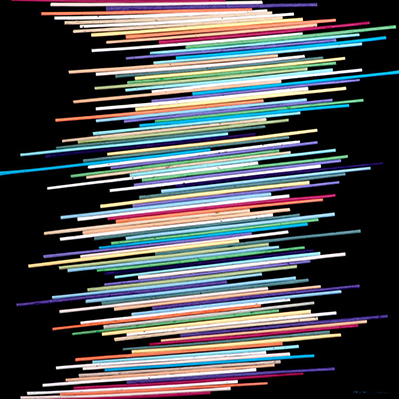
SunYoung Won Lee, Young and Restless Space/ 질풍노도의 공간, 2018, Mixed media on hanji paper, 48 x 48 inches
Review: The Work of Sun Young Won Lee
HANJI AND THE PRESENCE OF ART
Robert C. Morgan, Art Critic
Over centuries of time, since the formation of the three dynasties during the second century AD, the bark of mulberry trees has played a remarkable role in the creation and history of Korean art. It has proven to be the source of one of the most functional, variable, and durable forms of paper available to artists. Known to Koreans as hanji, the pulp used in making this paper is derived from scraping the inner-side of the bark from indigenous mulberry trees. The technical process involved in making this pulp is a difficult one. It takes hours, days, weeks— and patience! — to produce this refined paper that will eventually serve as the basic ground for a painting or, in the work of Sun Young Won Lee, the veritable subject matter of her art.
Having taught Art and Art Education at Ohio State University, Professor (Won) Lee recently chose to work with hanji as her primary medium. It felt like a rebirth that now she would have time to focus on her painting — “to explore this reincarnation of my life, my emotions and my feelings.” This personal side— so forcefully, yet indirectly visible in Won Lee’s art — became both essential and necessary to her way of thinking about painting. For a mature artist, such as herself, it would be inconceivable to separate her art from the way she lived and thought about her regained position as an artist. Hanji became a symbolic link that allowed Won Lee’s Korean past to enter into her current life in America. Yet, at the same time, the forms and traditional methods could be traced back to her origins when she first experienced finding her way as a youthful artist at the prestigious Ewha Women’s University in her native Seoul.
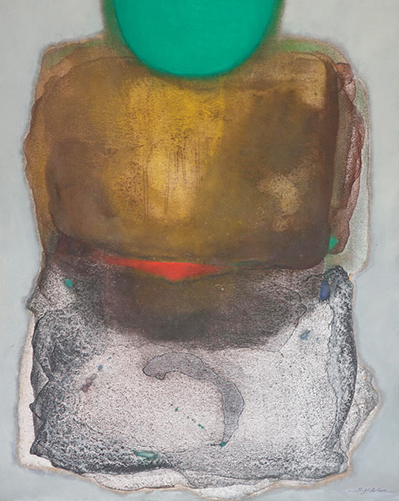
SunYoung Won Lee, Landscape/대지의 풍경, 1982, Oil on canvas, 40 x 50 inches
For her exhibition at the Riverside Gallery in Hackensack, New Jersey, the artist decided to bring two aspects of her work together into a single frame, so to speak. Rather than show only her most recent work, celebrating her newly discovered approach to hanji, (Won) Lee chose to re-present earlier paintings from another period in her career when the use of color was more visibly expressive. Examples would include Summer Beach (1983), Landscape (1982), and Morning Twilight (1982), all of which were painted with oil on canvas. What is curious about these paintings, given their Korean emphasis on the natural world, is the artist’s method of painting. The Western influence on Korean painters began as early as the 1950s in her country, when artists — such as Lee Ungno, Park Seo Bo, and Kim Tschang-yeul —went to Paris to familiarize themselves with oil painting and abstract technique, such as l’arte informel, which was important at the time.
The landscapes of Sun Young Won Lee came much later in the early 1980s during her tenure at Ohio State. By then, Western-style painting using oil on canvas was popular and generally accepted by Korean artists. Yet, what stands out in (Won) Lee’s paintings is the manner in which they are painted. Rather than using Western abstraction, she applied a more deeply modest approach to color and form in her profound struggle to bring out the essence of the natural world. In retrospect, it is a pleasure to view (Won) Lee’s early paintings in relation to her more recent work. In doing so, it becomes evident that the Korean presence has retained its authenticity in her work, even as it has shifted to another level. Today the artist’s focus is given to the use of hanji.
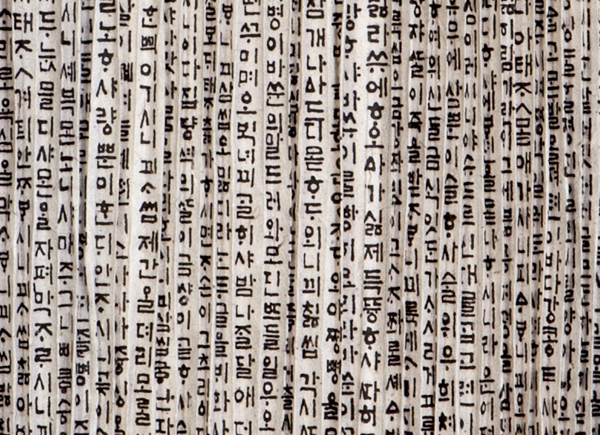
SunYoung Won Lee, Lifetime Mediation(Detail)/ 평생의 명상, 2018, Mixed media on hanji paper, 36 x 48 inches
Hanji belongs to Korean art just as xuan belongs to China. In fact, the production of these papers is similar, but not the same. For example, xuan paper tends to use elm bark in addition to willow and mulberry. Nevertheless, these papers continue to have endurance, refinement, and beauty, each in their own way. In the recent works of (Won) Lee, such as the magnificent Revelation of Brain Power and Lifetime Meditation (both 2018), both employ mixed media on hanji paper. In each painting, the artist employs printed paper bearing Chinese ideograms from the past that were used at one time in Korea prior to the late Jeosun period when the gradual transition of Korean hangul began to evolve from a hieratic to a demotic form of writing. Placed side-by-side, each of these bold paintings on hanji reveal a central axis, the former in silver and the latter in gold. They are powerful statements regarding the recent history of this internationally-renown East Asian country.
From a more personal point of view, (Won) Lee’s recent work may begin with a horizontal tripartite painting, titled Sunset on the Ocean (2005). Painted on “hand-made paper” (presumably hanji), this would be a departure from the earlier canvases. The colors are soft primaries that bleed into the paper with a series of tricolor lines — yellow, blue, and turquoise — running horizontally through the painting. In contrast, Winter Stream Revisited (2018) is positioned vertically with individual sheets of rolled paper (hanji) that suggest a rhythmical motion across the surface. Despite the virtual absence of color, the sensory feeling of this painting seems to correspond to the artist’s memory of visiting a place that, for her, was a deeply felt experience with nature.
In her artist’s statement, which focuses on the present, (Won) Lee describes her painting My World (2018) as a composite of short stories. Do the stories exist in reality or are they memories she has kept over time? “My World” is made using a series of thinly rolled elongated papers, each placed diagonally and tangentially on a rectangular surface. The application of color is preempted in favor of constructing a structural relief. There is a literal aspect to this work in some ways more related to sculpture than painting. Still, the emphasis on the act of remembering in relation to three-dimensional form is interesting, and very much within the context of transforming the personal side of her art into a physical presence that communicates with others.







